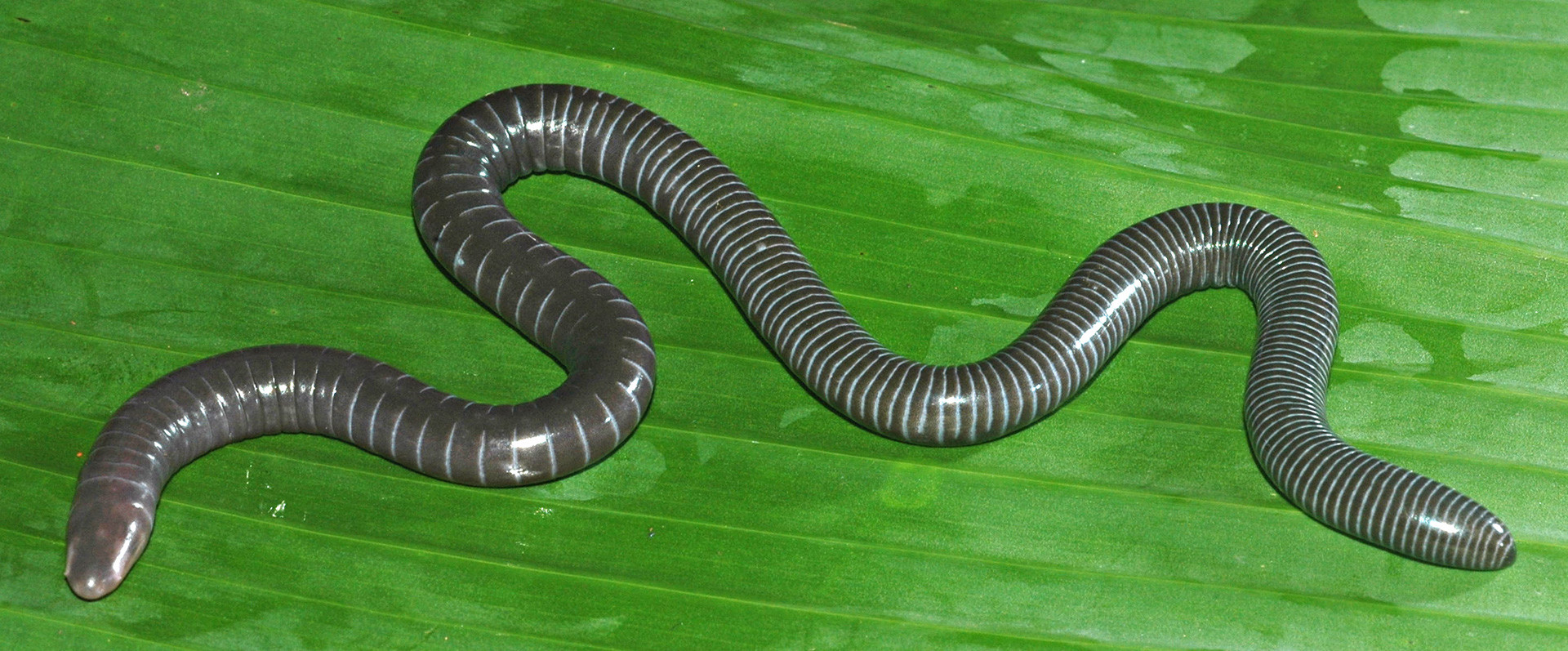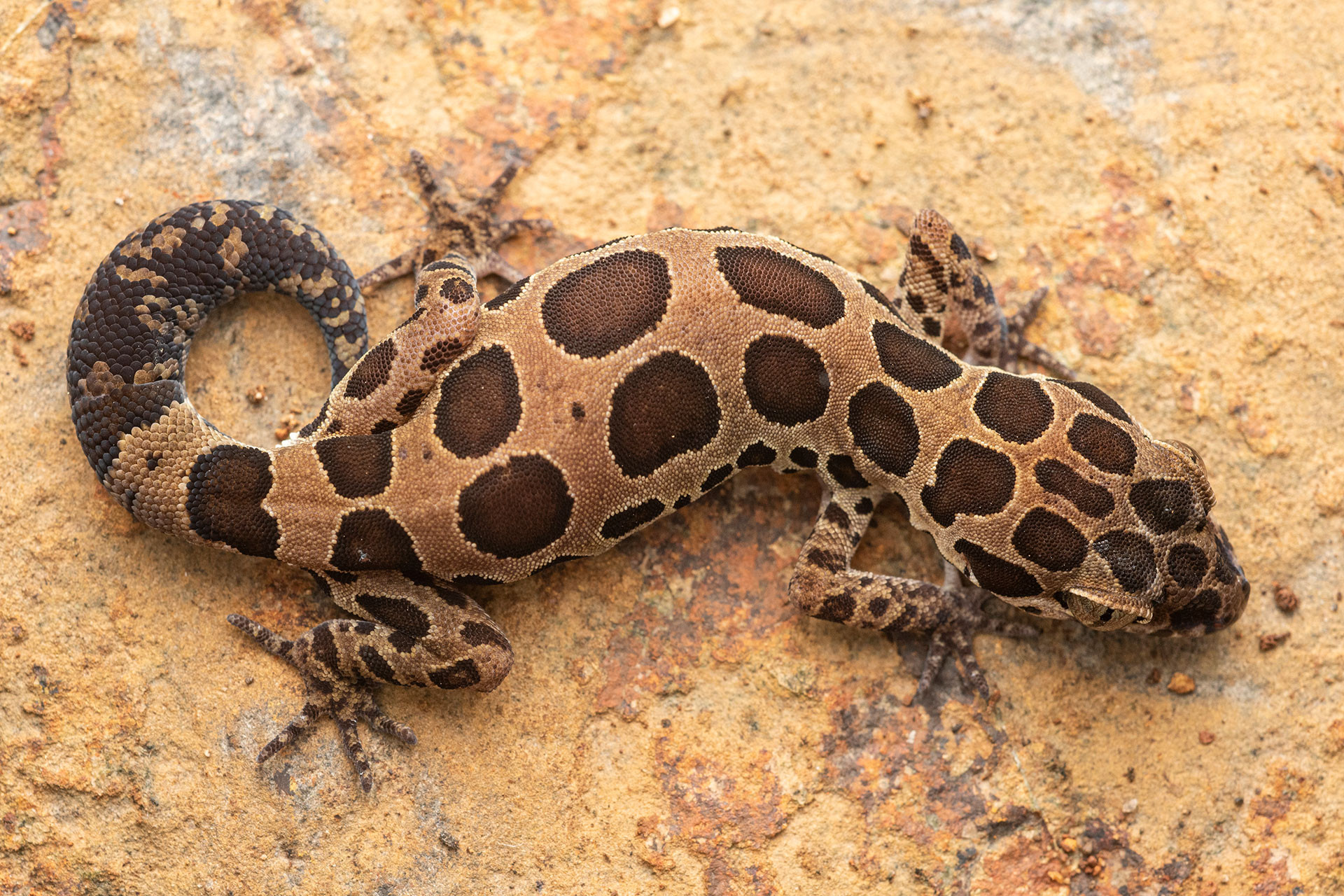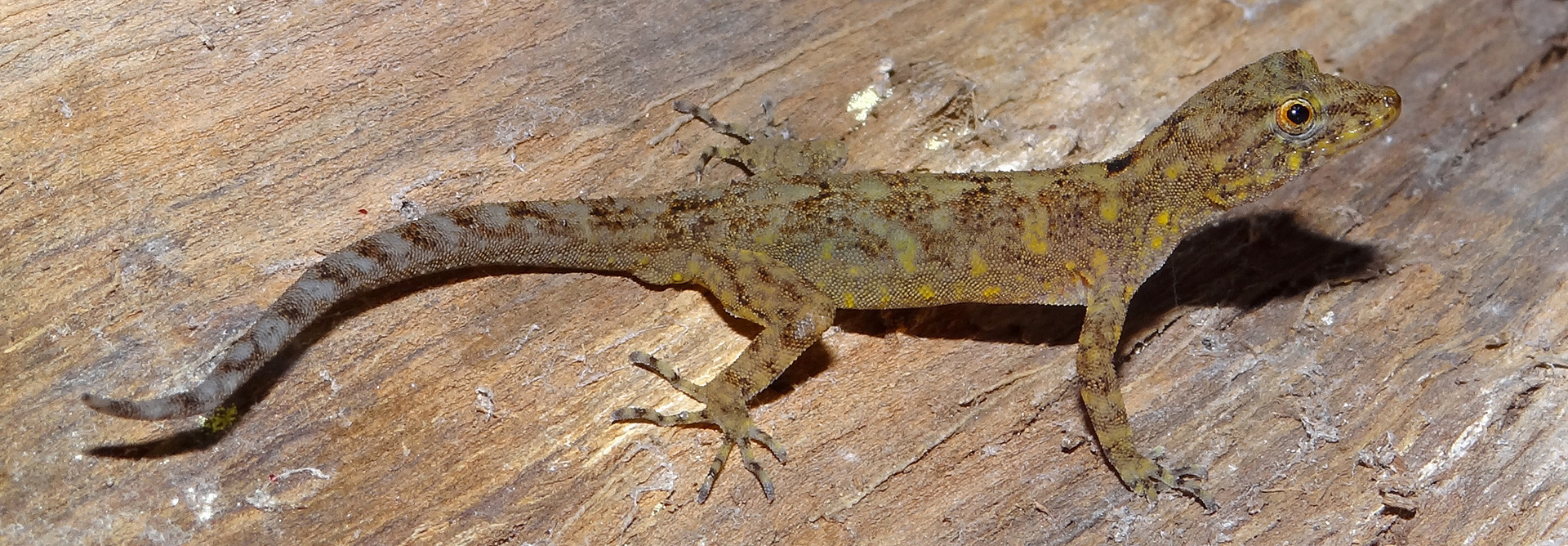Having discussed geckos, frogs and caecilians (a group of limbless, vermiform or serpentine amphibians) for about an hour, over the phone, I asked Varad Giri what he thinks has been the biggest highlight of his career. In response, he narrated the following anecdote.
"I conduct these training programmes where I take people out to the forest. In Amboli, there is a lizard called the Hemidactylus house gecko. I used to see them all the time; they are one of the commonest house geckos. Aur sab logon ko mein bolta hoon (To everyone I used to say), this is Hemidactylus brooki. Ek din kya ho gaya, maine sab bachhon ko bola ki abhi kya karte hain, ek individual pakdo, uska photograph lelo aur uski taxonomy, species identify karo (One day what happened was that I told a group of kids who were attending the training programme to catch an individual and identify the taxonomy and species). After two hours, they come and say, ‘Hey Varad, this is not matching with anything’. I was so confident that I asked them to recheck. But it turned out to be a new species. This incident made me plant my feet back on the floor. The species was eventually named Hemidactylus varadgirii."
For Giri, every second in the wild is a highlight, a learning moment, where nature briefly exposes her secrets upon one's humble request for a chance to observe and understand the natural world.
Varad Giri is a herpetologist whose work has resulted in the description of two new genera and 56 new species of amphibians and reptiles from the Western Ghats in India. As I write this, Varad, who already has four species named after him, now has a genus of helicarionoidean semi-slug named in his honour after the description of a new species from Amboli, Maharashtra – Varadia amboliensis.
Today, Giri puts his years of experience in the field to use by training young researchers. He is also the founder director of Nidus, an organisation that works towards popularising citizen science in an attempt to bring more and more people into the fold of conservation.
In this edited transcript, read about the journey of his career as a herpetologist and how it informed his belief in the power of citizen science to enhance our understanding of the natural world.
Your world is one of geckos, caecilians and other amphibians and reptiles. What informed your career choice? If you could briefly tell us about your inspirations.
I was a researcher by accident, not by choice. In 1993, one of the biggest things people used to do was to do a Masters in Chemistry which guaranteed a job. Unfortunately, my marks were pretty low, and I had no option but to do a Masters in Zoology. Prior to that, the only inclination that I can remember I had towards the subject was my aptitude for drawing and keeping journals.
Fortunately, while at Shivaji University, I had the chance to meet Hemant Dhamake, a senior who took me under his wing. I remember joining his friends on a trip to the forest one day, and I was intrigued by how they watched birds, flowers etc. For me, until then, visiting a forest was all about trekking. When we got back to our rooms, I told him about a bird I saw. I found the questions that followed to be very interesting. He asked what was the colour of the beak, the colour of the wings, the shape of the beak, where the bird was sitting etc. He went on to tell me how the next time I see a bird I should try to make a sketch of the bird and note down my observations.
So the next time I saw the bird, I made a drawing of it and went back to him. He took me to the library and gave me a book – at that time the only book on birds that was available was Dr Salim Ali's The Book of Indian Birds – and asked me to find the bird in the book. When I started looking at the images in the book, I realised the value of observing features like beak, wings etc. I somehow managed to identify that bird. He then asked me to look at the family of the bird, find out which genus, and find out why it is part of that genera. So the mentorship was amazing.
I somehow convinced my parents to lend me money to buy a camera and started doing bird photography. My roommate Anil Shingare was a snake rescuer, and his understanding of snakes was just phenomenal. I started utilising my birdwatching skills to observe snakes as well. We managed to get a book on reptiles by JC Daniel, again published by Bombay Natural History Society (BNHS), and honestly, these were the only two books I studied during my Masters. Jungle mein jao, dekh-ke aao, uske baare mein padho (Go to the jungle, observe species, come back and learn about them). That is when I heard about BNHS, and mere sapna ban gaya, wahan jaake kaam karne ka (it became my dream to work there).
So how did a birder become a herpetologist at the Bombay Natural History Society (BNHS)?
Around that time, I happened to go to BNHS for some reference work. Now we have the internet, one can Google things. Back then, if you wanted to do some reference work you had to go to the library of some organisation, go through the journals and write down all the information. One of my friends, Prashant Mahajan, who used to work with BNHS at the time, came up to me to ask if I would like to attend a walk-in-interview. I didn't have my certificates or anything. He took me down to the computer room and asked me to type out my biodata. I told him I don't know how to use a computer. Without a moment’s hesitation, he started typing it out for me and asked how many marks I got in Xth and XIIth. When I replied 48 per cent and 50 per cent, I think his enthusiasm started to melt. And my English was horrible. There was nothing positive about my biodata, except my limited understanding of birds and snakes.
We wrote down all the points, and that is when I told him that we reported a Ceylon Frogmouth for the first time from Maharashtra. Before that, it was only reported from Goa, and that was the southernmost limit. I had seen one individual, and it was a female in a nest. Prashanth said this was interesting, and he wrote that down on the biodata. My entire interview ended up being about the bird. Dr Asad Rahmani, the famed director of BNHS, and JC Daniel, whose book I used to read, were all part of the interview panel. They started asking questions like which family, what genus, why that bird is there in that family etc. Fortunately, my training came to my rescue. The interview went well, and they offered me a position in the Herpetology department. I said, of course, and told them I was ready to start tomorrow if need be.
After the interview, I asked people what herpetology was! It was not a word that was commonly used back then. I joined BNHS, and the entire world changed for me. There was a massive collection of amphibians and reptiles at BNHS, and my job was to look after them. I started learning about them with a great passion. I was also able to renew my interest in photography while at BNHS, with the help of my friends Varshali and Harshal Nikam who gave me 'non-returnable funds' to buy good camera gear at the time.
How did you come to focusing your efforts on studying caecilians?
In 2001-2002, there were very few people focusing on herpetology in India. And the Western Ghats region of Maharashtra was pretty much unexplored. I decided to look into a space that has little competition and figured that studying caecilians was the best option for me. While in Amboli, I came across one individual. Until then I never even knew that there are animals called caecilians. They were a mysterious species back then with too many questions around them and nobody to explain. And if you try to ask somebody, especially in India, people used to treat you so badly.
But when you meet the right people at the right time, things do change. Mark Wilkinson and David Gower, caecilian experts from Natural History Museum, London, were visiting BNHS for half a day. Ashok Captain, a herpetologist, was their guide, and knowing my interest in caecilians, he introduced me to them. It was the first time I was meeting someone with a sound understanding of the subject. I used to feel very intimidated to talk to Indian experts, but David and Mark were such simple people, they allowed me to ask questions and listened to what I had to say. They only had one message for me before they left, they wanted me to study caecilians.
I got ₹5000 to conduct a survey in Amboli; we searched and finally found one individual under a rock. I took it back to BNHS, looked at all the characteristics (at the time we didn't have microscopes and used magnifiers that watchmakers use), and made line drawings and notes. But it did not match any of the known Indian species. I wrote a short note to Mark and David over email. The next day I got a response from them saying that they had never seen anything like this in India before. These are the people who regularly visited India to search and study caecilians, and when they say that about the specimen we had collected, it was something highly exciting. What was more exciting was that they were visiting India soon and they wanted to spend a few days with me and teach me how to identify the species.
In 2002 they visited and stayed for around 4 days, and that was the time when my entire perception of scientific research changed. They taught me how to record data, and the specimen I had collected turned out to be a new species. Later in 2003, a new species was described, and we named it Gegeneophis danieli. I wanted to dedicate it to JC Daniel, the first person who wrote a popular book on Indian amphibians and reptiles. People like me started their career reading his book. By then, a curiosity about the group had been infused in me and I used to catch them wherever I went, study them, observe them, and write about them.
What was the reason behind your decision to spend more of your time teaching and training researchers?
I think I started around 2003. I realised that apart from my work, I needed to teach as well. Logon ko padhao, aur logon ko lelo, kyonki amphibians, reptiles mein kaam karne ke liye log the hi nahi (Teach people and bring them into the fold, as back then there were very few people working on amphibian and reptilian research). So we started conducting training programmes. BNHS used to conduct one-year courses on herpetology. Aur logon ko leke jao jungle mein, alag alag cheesein sikhao. Koi naya banda aa jata hai, kuch naya mila toh usko encourage karo, usko paper revise karke dedo (Take more people to the jungle, teach them about different species. If someone makes a discovery, help them and guide them in publishing a paper on it). I started engaging myself in all these things.
I've had some amazing mentors myself. Satyajeet Mane, who is also a dear friend, supported me financially and emotionally. He always ensured I had both my feet on the ground and encouraged me to go out and do more. My wife Kshamata, compromised her career even and has been such a strong support system. So, it has also been about giving back and doing what I can do to pave the way for more researchers to come through the fold.
And when you put in sincere effort, you will see some great results come out of it. I will not say that Ishan Agarwal is my student, but he was one of the students of the herpetology course at BNHS. He is now one of the prominent herpetologists in India. R Chaitanya is another amazing herpetologist who has described over 20 species in the last 5-6 years. Akshay A. Khandekar is another young guy. For all these people, in some way, I have been responsible for their training. It took me around 15-16 years to understand taxonomy, but I can train them in just under a year. So if I can help reduce that time of learning, they can utilise it in the field instead.
Apart from that, we are also trying to do some biodiversity inventories. Myristica swamps are unique freshwater habitats in the Western Ghats and there are a few of these swamps in Goa. Literally, nothing is known about these swamps, and we are trying to document the biodiversity in these swamps with the help of citizen scientists, aka people who don't have a scientific background. Our motto is that experts should not join our project. People who want to understand and learn can join. I take them to the field, we document things, and if it's something new, I help them to write the paper etc. I have joined back at BNHS as well, we are planning to conduct some serious surveys. There are about 11 conservation reserves that have been declared in Maharashtra now and I was marginally responsible for the entire process as I'm working in that landscape and I know the problems. Fortunately, the government is very good and whatever we took forth has been sanctioned. Sanction doesn't mean that we've won the battle. What we are doing is documenting whatever is there. So this is what my priority is now, to work in these spaces outside protected areas, engage with citizen scientists and come up with a good understanding of the biodiversity of these landscapes.
Why do you have such a staunch belief in the power of citizen science?
I started my career by reading the book of Dr Salim Ali, one of the most prominent citizen scientists the country has seen. He was not a trained ornithologist, he never had a degree, but his sheer enthusiasm resulted in the generation of such an amazing resource. For me, that is the inspiration, and I never considered my contributions to the field as anything great because that research was paid for. I received a salary to do the work I did. But these people, whatever they have contributed, was because they were highly motivated and passionate about the subject.
R Chaitanya, for example, used to work with IBM, and in 2014 he did a course with us on amphibians following which he decided to quit his job and pursue herpetology. Now he is one of the best in the country, and I can proudly say much better than me. I take his guidance today. This is the power of citizen science, and what we need to give them is a path. At the end of the day, everything is going to benefit science. I may be alive for another 20-30 years, after that Varad will be history, but Indian herpetology will live on. So when I'm alive I should be doing something which will be beneficial to science.
We are in 2021 and all we know is that in India there are around 700 reptiles and 400 amphibians, and we only know the names of these species. Take for example the house gecko, the most common reptile. Do I have any understanding of the preferred habitat of the gecko? No. Do I know what they feed on? No. I don't know anything about the most common reptile or amphibian. Now think about the rare ones. I'm sure their conditions are not good, so we have to understand that as well. For conservation, we have to have some understanding of their habitat, ecology and more. We need more people studying this. Unfortunately, herpetology doesn't give you money. I know there are amazing people working in the field but they are unable to sustain themselves because of a lack of funds. So how can we compensate for that? Encourage citizens to do the work!
How do you involve the larger public in making valid contributions to science and conservation?
What I'm doing today is encouraging anyone with a camera to submit their wildlife images to science and not just on social media. Of course, awareness generation does happen on social media, but much of it loses value after a couple of days. Instead, if you upload them on portals like iNaturalist and India Biodiversity Portal, they become data points. My philosophy of photography is that with a single click you have frozen a historical moment. It tells me that a species is available at a certain time in that particular region. Suppose the frog is calling. What does that indicate? If there is a female frog with eggs? It indicates breeding. I am getting quite a lot of data that is not there. Once people start uploading this information, our understanding of natural history will surely get enhanced.







